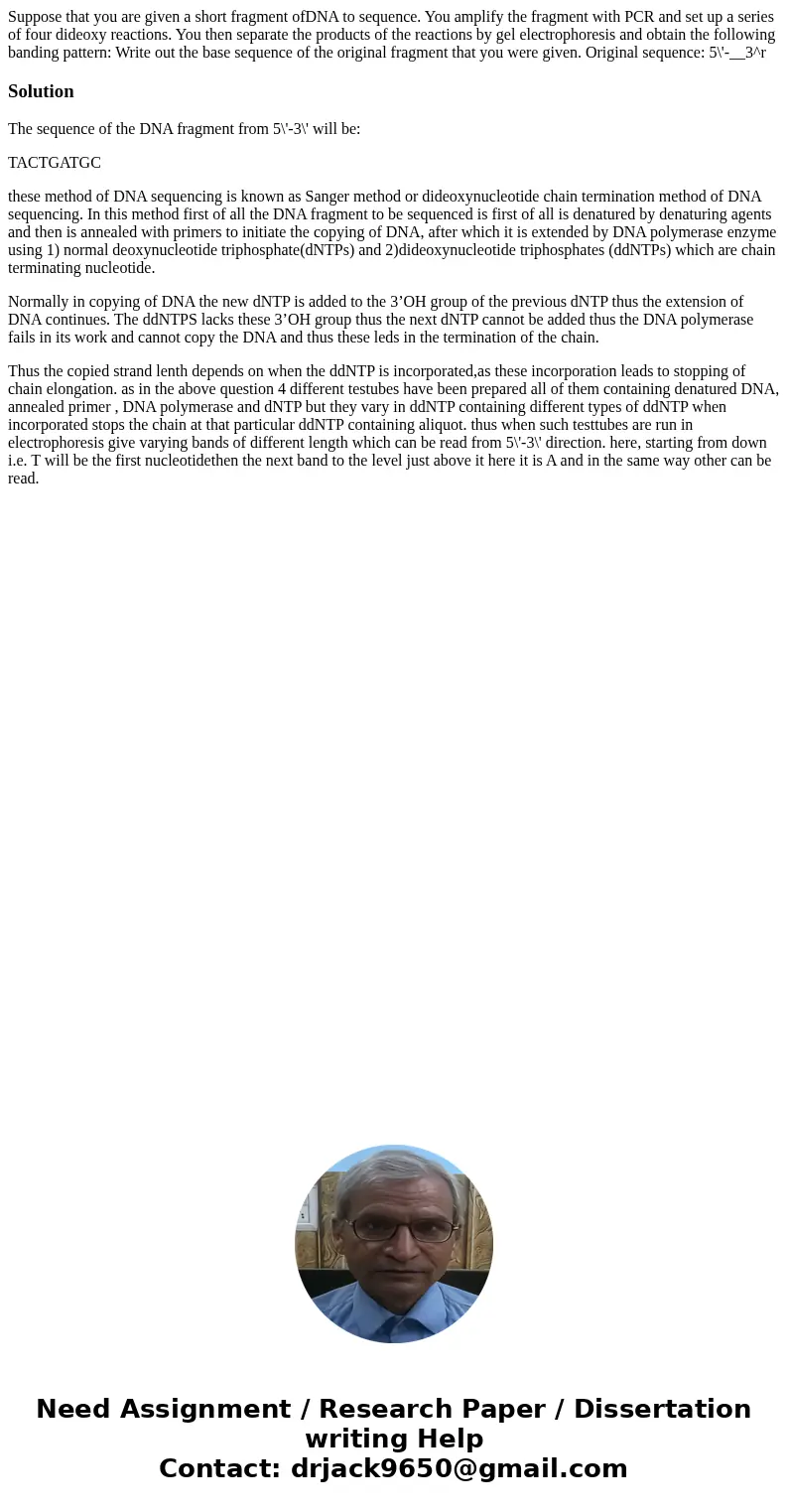Suppose that you are given a short fragment ofDNA to sequenc
Solution
The sequence of the DNA fragment from 5\'-3\' will be:
TACTGATGC
these method of DNA sequencing is known as Sanger method or dideoxynucleotide chain termination method of DNA sequencing. In this method first of all the DNA fragment to be sequenced is first of all is denatured by denaturing agents and then is annealed with primers to initiate the copying of DNA, after which it is extended by DNA polymerase enzyme using 1) normal deoxynucleotide triphosphate(dNTPs) and 2)dideoxynucleotide triphosphates (ddNTPs) which are chain terminating nucleotide.
Normally in copying of DNA the new dNTP is added to the 3’OH group of the previous dNTP thus the extension of DNA continues. The ddNTPS lacks these 3’OH group thus the next dNTP cannot be added thus the DNA polymerase fails in its work and cannot copy the DNA and thus these leds in the termination of the chain.
Thus the copied strand lenth depends on when the ddNTP is incorporated,as these incorporation leads to stopping of chain elongation. as in the above question 4 different testubes have been prepared all of them containing denatured DNA, annealed primer , DNA polymerase and dNTP but they vary in ddNTP containing different types of ddNTP when incorporated stops the chain at that particular ddNTP containing aliquot. thus when such testtubes are run in electrophoresis give varying bands of different length which can be read from 5\'-3\' direction. here, starting from down i.e. T will be the first nucleotidethen the next band to the level just above it here it is A and in the same way other can be read.

 Homework Sourse
Homework Sourse